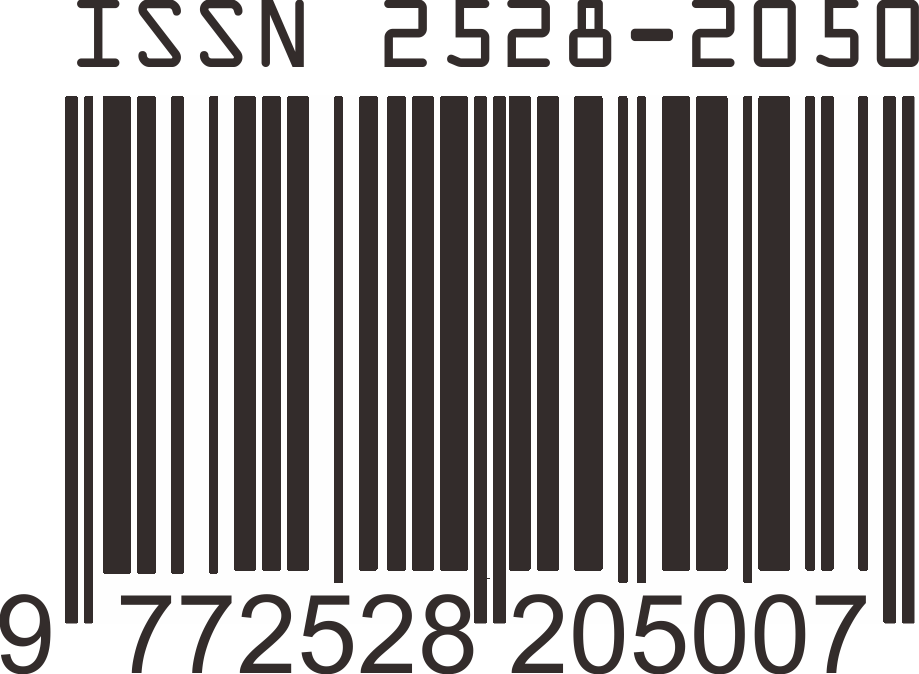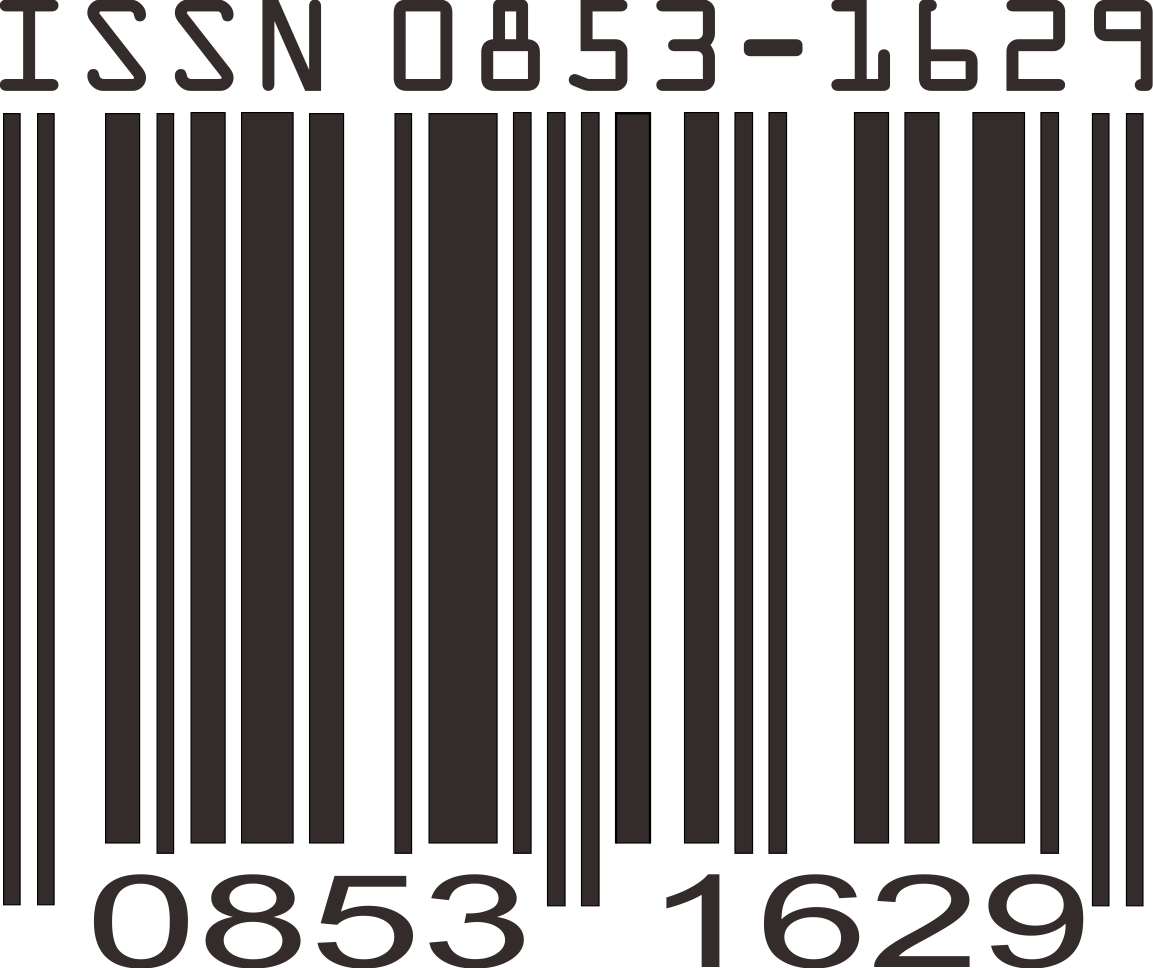Pemakaian Sel Hela dalam Uji Sitotoksisitas Fraksi Ethanol Biji Mimba (Azadirachta indica)
Abstrak
Traditionally, the neem (Azadirachta indica) seeds have been used as bioinsecticide. It was also used and known for long time as a fungicide and anti bacterial agents. Pre-toxicity experiment using brine shrimp lethality test (BSLT) method indicated that the ethanol fraction of the neem seeds was toxic to the shrimp larvae with LC50 38.79 μg/ml. This experiment was done to further investigate the possible role of ethanol fraction of neem (A. indica) seeds as an anti cancer agent using HeLa cell lines. Experiment was initiated by extracting the seeds using n-hexane by maceration. The macerate was then macerated further using 70% ethanol as solvent. The ethanol fraction was used in cytotoxicity assay using (cervix cancer) HeLa cell lines. Cytotoxicity assay was done by using direct counting method. The amount of living cells were observed and counted, death percentage was determined and probit analysis used to determine the LC50 value. LC50 value for ethanol fraction from the seeds of neem (A. indica) was 10.95 μg/ml for 24 hours; 7.33 μg/ml for 48 hours and 4.37 μg/ml for 72 hours based on cytotoxicity analysis using HeLa cells. This experiment concluded that the neem (A. indica) seeds have cytotoxicity toward HeLa cell lines which confirmed the previous toxicity experiment using brine shrimp lethality test (BSLT) method. Overall, this experiment indicated that neem (A. indica) seeds have anticancer activity.
Kata Kunci
Teks Lengkap:
PDFReferensi
Backer, C. and Brink, V., 1963. Flora of Java, Vol II, N.V.P. Noordhoff Gronongen. The Netherland. Hal 117-120.
Departemen Kesehatan RI., 1989. Materia Medika Indonesia, jilid V. Departemen Kesehatan RI, Jakarta.
Departemen Kesehatan RI., 1995. Materia Medika Indonesia, jilid II. Departemen Kesehatan RI, Jakarta.
Doyle, A. and Grififths, J.B., 2000. Cell and Tissue Culture for Medical Research. John Wiley & Sons, LTD. New York. Hal 12 – 16, 48 – 49, 409.
Freshney, R.I., 1987. Animal Cell Culture, A Practical Approach. 1st Edition. IRL Press. Washington DC. Hal 3, 38, 183 – 188, 309 – 312, 329 – 330, 336 – 337.
Gruenwald, J., Brendler, T., and Jeanicke, C., 1998. Physician’s Desk Reference for Herbal Medicine, 1st edition. Medical Economic Company, Montvale, NJ.
Harborne, 1996. Metode Fitokimia. Terbitan kedua.Terjemahan dari: Phytochemical methods. Oleh: Padmawinata, Kosasih, Iwan S. ITB. Bandung. Hal. 6, 147.
Hyne, A., 1987. Tumbuhan Berguna Indonesia, jilid III. Badan Litbang Kehutanan, Jakarta.
Khotimah, K., 2004. Uji sitotoksisitas dan antiproliferasi fraksi petroleum eter dan fraksi ethanol kulit batang kamboja (Plumeria acuminata) terhadap sel HeLa. Skripsi. Fakultas Farmasi Universitas Ahmad Dahlan, Yogyakarta. Hal. 21.
Meyer, B.N., Ferrigni, N.R., Putnam, J.E., Jacobson, L.B., Nicholas, D.E., and McLaugnin, J.L., 1982. Brine shrimp : A convinient general bioassay for active plant constituent. Planta Medica 45: 31 – 34,.
Sari, A., 2006. Uji toksisitas ekstrak ethanol 70% biji mimba (Azadirachta indica) fraksi n-heksan, fraksi etil-asetat dan fraksi air terhadap Artemia salina. Skripsi. UHAMKA, Jakarta
Siswandono dan Sukarjo, B., 2000. Kimia Medisinal, edisi II. Airlangga University Press, Surabaya. Hal. 163 – 165.
Sudarsono, Gunawan, D., dan Wahyono, S., 2002. Tumbuhan Obat II, Hasil Penelitian, Sifat-sifat dan Penggunaan. Pusat Studi Obat Tradisional Universitas Gajah Mada, Yogyakarta.
Sutamo, H. dan Atmowidjojo, S., 2000. Pengenalan dan Pemanfaatan Tumbuhan Penunjang, seri 2. Prosea Bogor, Indonesia. Hal. 56 – 57.
Syukur, C. dan Herman, 2001. Budidaya Tanaman Obat Komersial. Penebar Swadaya, Jakarta.
Syamsul, A.A., 1990. Flavonoid and Phytome Diaca. Kegunaan dan Prospek I (2): 120 -127.
Article Reads
Total: 3115 Abstrak: 733 PDF: 2382Article Metrics
Metrics powered by PLOS ALM
Refbacks
- Saat ini tidak ada refbacks.
Laman ini dikelola oleh:
Bio Publisher
The Faculty of Biology Publishing
Laman ini dikelola oleh:
Penerbitan Fakultas Biologi
Universitas Jenderal Soedirman
Jalan dr. Suparno 63 Grendeng
Purwokerto 53122
Telepon: +62-281-625865
Email: biologi@unsoed.ac.id
Laman ini menggunakan:
OJS | Open Journal System
Software pengelolaan jurnal ilmiah online. Versi yang digunakan adalah 2.4.8.0.
Metadata artikel terdaftar di:
Crossref
Agen resmi internasional pendaftaran Digital Object Identifier (DOI)
Artikel jurnal ini terindeks:









